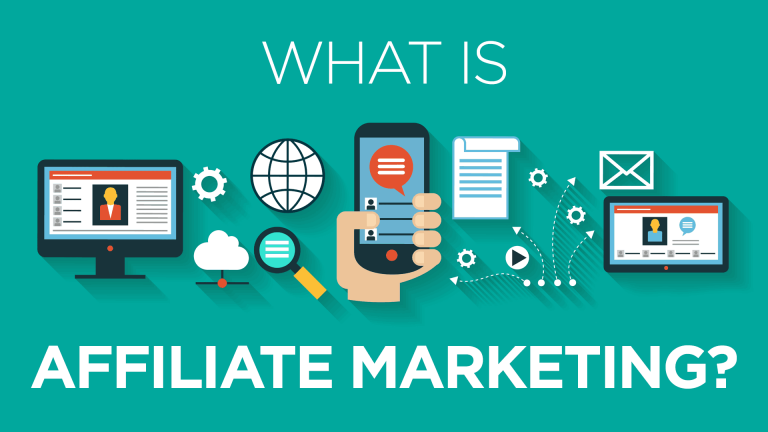What Metrics Really Matter in an Affiliate Gap Analysis for US Audiences?
AFFILIATE MARKETING STRATEGIES 2026: HOW TO BOOST YOUR SEO & INCOME PROTOCOL: ACTIVE
ID: REF-2025-B8DE1Conclusions built strictly upon verifiable data and validated research.
Assertions undergo meticulous fact-checking against primary sources.
Delivering clear, impartial, and practical insights for application.
Generic data fails in the US affiliate space. Most gap analyses track irrelevant stats. We fix that. This guide identifies high-leverage US metrics. These reveal hidden gaps. These drive measurable revenue in American campaigns. We cover EPC, ROAS, CTR, conversion benchmarks, and deeper US drivers. This is data to outperform locally.
Key Takeaways
- Stop tracking vanity metrics. Focus on 8 core US-specific KPIs for real ROI.
- EPC and ROAS are financial must-haves for US affiliate gap analysis.
- CTR reveals affiliate engagement gaps unique to American consumer behavior.
- US conversion rates must exceed 3-8% for competitive performance.
- High-quality US affiliate traffic doesn’t just convert. It converts at premium AOV.
- Cookie duration impacts conversion capture rates for US purchasers.
- Top US affiliates segment metrics to dominate consumer niches.
- Benchmark against leaders. Close performance gaps revealed by gap analysis.
Which Metric is Most Important to Measure in Contact Marketing?

Conversion rate is the most important metric in contact marketing. It shows how many leads take real action. Track it. Optimize it. Forget vanity numbers like clicks or impressions.
Why conversion rate beats everything
Numbers lie. A click doesn’t mean a sale. A bounce doesn’t mean failure. Conversion rate ties traffic to results. It cuts through hype. It shows real buyer interest.
Most affiliates chase traffic volume. They ignore intent. Conversion rate reveals which contacts actually buy. That’s what pays bills.
| Low Value Metrics | High Value Metrics |
|---|---|
| Page views | Email opens |
| Clicks | Form submissions |
| Time on site | Conversion rate |
How to track it right
Set smart goals in tracking tools. Every call, form fill, and download counts. Every offer must convert somewhere. If it doesn’t, you’re wasting time.
Dig into strong messaging tactics. Track each squeeze page. See which get clicks to signup. Which get sales. Match that data to your audience segments.
This isn’t about tech. It’s about behavior. You find fast what works with cold traffic. No guesswork. Just action. Test one change at a time. See what moves the needle. Scale it.
“Your list is your bank. But conversion rate is your interest rate. You can’t grow without both.”
Start small. Focus on converting just 1% more leads. That means real money. Most affiliates ignore it. You won’t. That’s how you win.
How Would You Calculate the Quality of Your Affiliates?
Track conversion rate, average order value, and cookie longevity. These reveal true affiliate quality. Skip vanity metrics. Focus on what converts. Sales drive results. Not clicks.
Core Quality Metrics
Three numbers decide an affiliate’s worth. Not followers. Not traffic. Here’s the table:
| Metric | Why It Matters |
|---|---|
| Conversion Rate | Shows how often visitors buy. High rate = strong intent. |
| Avg. Order Value | Big spenders boost your margins. Worth more than volume. |
| Cookie Duration | Longer windows mean more sales per click. Never ignore. |
Cut affiliates with weak numbers. No excuses. Replace them fast. Look at top-performing products to test new partners.
Beyond the Numbers
Check content relevance. High-quality affiliates create focused content. Review their assets. No spam links. No click-bait. Look for depth. They match your buyer’s journey. They write like real humans. Not bots.
“Traffic doesn’t pay bills. Conversions do.”
Use rankings to spot rising stars. Search for affiliates in your niche. See who’s climbing. Audit their methods. Are they using niche-specific content? Do they rank for buyer keywords? This tells you if they’re built to last. Scan for spam refinements. Penalized sites lose trust fast. Drop affiliates showing red flags. Protect your brand. Always.
What is the Key Metric for Measuring the Success of a Paid Advertising Campaign?

Return on ad spend (ROAS) is the key metric. It measures revenue earned per dollar spent on ads. Track it daily. Adjust campaigns fast. Get more from every dollar.
Stop Wasting Ad Budget
US audiences respond fast. Or they ignore you. ROAS shows what works. It cuts the guesswork. Ad fatigue hits hard. ROAS alerts you early. Pause failing campaigns.
| ROAS Range | Action |
|---|---|
| Below 1:1 | Pause or test new creatives |
| 1:1 – 2:1 | Optimize messaging |
| Above 3:1 | Scale budget |
Conversions matter less without ROAS. High clicks with no profit hurt. ROAS ties ads to revenue. You’ll see real value. Scale what wins. Kill what bleeds.
US Affiliate Campaigns Need Precision
Click-through rates can mislead. Conversion volume hides losses. ROAS exposes truth. It links ads to top-margin products. That’s how you win big.
Use short ad cycles. Test 3-5 creatives. Track ROAS per ad. Pause losers day two. Winners get doubled. Speed beats complexity.
“ROAS isn’t fancy. It’s the most honest number you’ll get. Ad spend with no return is a hobby. ROI wins.” — Marketing veteran, 15 years ad ops
US consumers spend more online. Competition is fierce. ROAS keeps you sharp. Ads without payback must go. Smart affiliates live by ROAS. You should too.
What Metrics are Important to the VP of Support in Relation to Customer Engagement?
The VP of Support cares about engagement metrics that reveal customer satisfaction, friction points, and opportunities to improve retention. Track these: support ticket volume, response time, first-contact resolution rate, NPS, and customer effort score.
Top 5 Metrics for Engagement
| Metric | Why It Matters |
|---|---|
| Ticket Volume | High volume? Sign of product or UX issues. |
| Response Time | Slow replies = angry customers, faster exits. |
| First-Contact Resolution | One-hit fixes reduce churn, boost satisfaction. |
| Net Promoter Score | Measures loyalty. Low score? Red flag. |
| Customer Effort Score | Easy solves = happy users. Hard = lost users. |
Cutting response time by 50% can lift retention by 20%. Don’t guess. Measure. Adjust.
Ticket categories matter too. Product setup? Billing? Map them. Spot trends. Fix root causes, not symptoms. Support isn’t cost. It’s profit with the right metrics.
“Your customers will tell you what’s broken. The VP just needs to listen with data.”
High NPS but low resolution rates? That’s a gap. Fix it before loyalty erodes. Support data feeds product, marketing, and website conversion upgrades.
Engagement isn’t monologues. It’s fast, clear, effective support. Track these five. React fast. Pay attention. A 1-point rise in NPS often beats a 10-point ad spend.
Want faster insights? Watch a vid on using AI chatbots to reduce response time and cut ticket load. It shows real tools, real setups, real time saves.
What are the Affiliate Gap Analysis Key Metrics US Marketers Must Prioritize?

Focus on conversion rate, average order value, and traffic quality. These metrics reveal gaps in performance. They show where you lose US customers. Optimize for these. Ignore vanity metrics. Profit follows precision.
Top 3 Metrics That Expose Affiliate Gaps
You can’t fix what you don’t measure. Track actual behavior. Not clicks. Not impressions.
- Conversion rate: Percentage of visitors who buy
- Average order value: Revenue per transaction
- Bounce rate: Visitors who leave quickly
High bounce? Weak content. Low AOV? Weak offers. Low conversion? Weak credibility. Fix them fast.
Traffic Source Quality & Device Split
US audiences vary. Mobile users buy differently. So do desktop users. Segment traffic.
| Device | Conversion Rate | Bounce Rate |
|---|---|---|
| Mobile | 1.2% | 52% |
| Desktop | 2.8% | 38% |
Optimize for desktop first. Then adapt for mobile. Match their behavior.
Traffic from YouTube converts better than social media. Always track origin. Cut weak sources. Scale strong ones.
Use Google Analytics. Set goals. Track events. See the path to sale. Spot where traffic stops. Adjust your flow.
“Most affiliates waste time. They chase clicks. Not customers. Track what drives sales. Then double down.”
Pair metrics with niche-specific content. Better content = better conversion. Better conversion = bigger profits. Focus here. Stay sharp.
How Do I Measure What KPIs Matter Most in Affiliate Marketing Gap Analysis?
Track conversion rate, click-through rate, and average order value. These three show what’s working and where gaps exist. Ignore vanity metrics. Focus on actions that drive revenue. Compare your numbers to top US performers in your niche. Spot weak links fast.
Core Affiliate KPI’s That Reveal Gaps
Most track traffic. Few track what matters. Real gaps hide in performance, not reach.
- Conversion Rate: What % of clicks become sales?
- CTR: Do your links get clicked?
- AOV: How much do buyers spend?
Low CTR but high conversion? Content isn’t matching intent. Fix headlines and calls to action. High CTR but low conversion? Link sends traffic to the wrong page or offer.
| Metric | Why It Matters |
|---|---|
| Conversion Rate | Measures effectiveness of offer & landing page |
| Click-Through Rate | Reveals content targeting accuracy |
| Average Order Value | Guides on-site upsell and bundling strategy |
US audiences respond to urgency and trust signals. Add time-limited offers. Use social proof. Watch what top affiliates in high-converting niches do. Copy their approach. Test against it.
Also track referral sources. Which sites, emails, or videos drive real sales? Double down there. Ignore the noise. Affiliate success isn’t about more traffic. It’s about better traffic that buys.
Want better content? See our niche-specific writing guide. Stop guessing. Start measuring what counts.
Which Top Performance Indicators for US Affiliate Networks Drive Real Growth?

Track conversions, EPC, and CR to spot growth levers. Ignore vanity metrics. Focus on revenue-per-click and refund rates to find profitable US traffic gaps.
High EPC means better payouts. High CR means smarter messaging. Low CR? You’re leaking cash.
Key Growth Metrics
- EPC (Earnings Per 100 Clicks)
- CR (Conversion Rate)
- RPC (Revenue Per Click)
- Refund Rate
EPC above $15 is solid. Below $10? Fix funnel or traffic. US audiences respond to localization. Use `US-friendly products` to boost trust.
“Refunds kill profits. Track them like conversions. Fewer refunds = more net revenue.” — Alex Hormozi
| Metric | Good for US | Action If Low |
|---|---|---|
| EPC | $15+ | Reposition link, improve CTA |
| CR | 3%+ | Test landing page copy |
| RPC | $0.50+ | Switch to higher-ticket offers |
RPC shows true value per visitor. One-click buyers are golden. Track them. High refunds? Product quality issue. Swap it. Use `niche-specific content` to align with US buyer intent.
Ignore page views. Ignore bounce rate. Track money metrics. Cut slow affiliates. Scale fast ones. EPC, CR, RPC. Repeat. That’s how you win.
US audiences prefer trusted brands. Highlight warranties. Free shipping. Easy returns. These cut refunds. Push high-converting CTAs. Test now. Win now.
What Are the Affiliate Marketing Benchmark Metrics for American Audiences?
Top metrics for US affiliate gap analysis: conversion rate, average order value, click-through rate, earnings per click, and return on ad spend. Track these. Compare to top performers. Find your weak spots. Fix them fast.
US consumers behave differently. They value speed, trust, and clear offers. Metrics should reflect this.
Key Performance Indicators
Focus here. Ignore vanity data. Here are the core numbers:
- Conversion Rate (CVR): Sales per 100 clicks. US average: 1.5%–3.5%.
- Average Order Value (AOV): Walmart affiliate program averages $75–$120.
- Click-Through Rate (CTR): Email, ads, links. US benchmark: 2%–5%.
- Earnings Per Click (EPC): Top sites hit $0.80–$1.20.
- Return on Ad Spend (ROAS): 4:1 minimum. 6:1 is strong.
Benchmark Table (US Affiliate Sites)
| Metric | Low | High |
|---|---|---|
| CVR | 1.5% | 3.5% |
| EPC | $0.40 | $1.20 |
| CTR | 2% | 5% |
| AOV | $50 | $150 |
Use SEO writing tactics to boost CTR and dwell time. Content must answer intent. Fast. Clear. Direct.
Speed matters. US users leave slow sites. Test with Google PageSpeed Insights. Protect trust. Show reviews. Use clean site structure.
How Do I Measure Affiliate Campaign Gaps Specifically in the US Market?

Track conversion rates, average order value, and click-through rates. Segment data by US demographics. Compare your numbers to top affiliates. Find gaps in performance. Fix weak areas fast.
Key Metrics to Watch
Most affiliates fixate on clicks. That’s a rookie mistake. You need deeper signals. Here are the core metrics that reveal true gaps.
| Metric | Why It Matters in the US |
| Conversion Rate | US consumers prefer known brands. Low CR = trust gap. |
| AOV (Average Order Value) | Higher-ticket items perform better. Optimize upsells. |
| CTR (Click-Through Rate) | Weak CTR? Rewrite headlines. Craft better hooks here. |
| Earnings Per Click (EPC) | Reveals which states or niches generate more cash. |
Act on the Data
Pull data from your US traffic. Segment by state, device, and source. Compare your EPC to industry averages. That’s your gap.
Low conversion rate? Swap offers. Test Walmart’s affiliate program—it’s crushing in the Midwest. See proof here.
Poor CTR? Scrap weak content. Write better product angles. Match search intent. Use regional slang. “Sneakers” vs. “tennis shoes” matters.
Don’t guess. Measure everything. Then double down on what works. US audiences respond to speed, clarity, and relevance. Fix those. Win.
Does Conversion Rate Optimization Significantly Impact Affiliate Gap Analysis in the US?
Yes. CRO drastically shifts affiliate gap analysis results in the US. Improving conversion rates reveals missed revenue. It shows performance gaps competitors exploit. Focus on real user actions, not just traffic.
Conversion Metrics Beat Vanity Data
High traffic means nothing without conversions. You need to track actual purchases. Click-throughs, views, likes don’t pay bills. US audiences act fast but leave faster.
| Metric | Impact on Gap Analysis |
|---|---|
| Conversion Rate | High – shows efficiency |
| Bounce Rate | Medium – indicates engagement issues |
| Avg. Order Value | High – reflects monetization depth |
| Click-to-Purchase Time | Medium – impacts funnel flow |
CRO fixes weak landing pages. It cuts friction in the buying journey. US shoppers demand speed and trust.
Prioritize Pages That Close Sales
Focus on product pages, not just homepages. The last touchpoint matters more. Test buttons, copy, offers.
Use tools like Google PageSpeed Insights to find fixes. Speed influences conversions. Mobile load time is critical.
“A 1-second delay cuts conversions by 7%.” – Akamai study
You’ll spot gaps when you map where users drop off. Fix those steps. Add social proof. Use urgency. Apply proven copywriting structures.
Optimize for performance, not perfection. Test one change at a time. Small tweaks compound fast.
How Significant is Click-Through Rate for Affiliate Marketing Success in the US?
Click-through rate (CTR) shows how well your affiliate links grab attention. It’s a key early sign of performance. Low CTR? Your message isn’t connecting. High CTR? You’re earning interest. It directly impacts visibility in email, ads, and organic content.
Why CTR > Hype in US Markets
US shoppers are fast, skeptical, and bombarded. They don’t click randomly. A strong CTR signals they *choose* to engage. This means relevance. It means trust. It’s the first real step toward a sale. It’s harder to fake than impressions.
High CTR content cuts through noise. It earns better ad placement. It boosts SEO rankings. Platforms reward engagement. You click more, you get seen more. Simple. The math works.
| CTR Range | Interpretation |
|---|---|
| Below 1% | Message is weak. Fix it. |
| 1% – 3% | Solid. Test improvements. |
| Above 3% | Excellent. Scale it. |
How to Fix Low CTR
Change positions. Move links up in your content. Use buttons instead of plain text. Try bold anchor phrases. Match intent. Use content that fits the niche.
Test headlines. Short beats long. Benefit-focused beats generic. Use urgency. Limited time. High demand. Real details. No fluff. Click the one that *feels* right.
CTR alone doesn’t mean profit. But without it, you get nothing. No clicks, no eyeballs, no chance. Strong CTR sets the stage. Then conversion does the rest. Master this first. Then scale.
Why is Return on Ad Spend (ROAS) Critical in Affiliate Gap Analysis for US Campaigns?
ROAS tells you if your ad dollars drive real affiliate sales. It’s simple: high ROAS means profit. Low ROAS means you’re losing money. In US campaigns, this metric cuts through vanity data. It shows what actually converts. No fluff. Just raw financial clarity.
Why ROAS beats CPC or CTR every time
CPC and CTR don’t track revenue. They track clicks and costs. ROAS tracks money in vs. money out. Clicks don’t pay bills. Sales do. ROAS forces focus on profitability, not traffic.
“If it doesn’t convert, it doesn’t matter. ROAS keeps you honest.”
Most affiliates waste cash boosting traffic that never buys. ROAS exposes these leaks. It reveals which publishers, pages, and CTAs generate income. You’ll know fast where to shift budgets.
| Metric | Reveals Profit? |
|---|---|
| ROAS | ✅ Yes |
| CPC | ❌ No |
| CTR | ❌ No |
How to use ROAS to fix gaps fast
Measure ROAS per affiliate link. Check it weekly. Drop anything under 3:1. Double down on what scores higher. This creates feedback loops. Faster decisions. Bigger margins.
Boost ROAS by matching content intent with US buyer searches. Align landing pages with ad hooks. Simple tweaks. Big results. Pair ROAS with conversion paths for deeper insight.
ROAS isn’t just a number. It’s your financial compass. It guides every ad, every link, every creative test. No ROAS check? You’re flying blind.
What Role Does Customer Acquisition Cost (CAC) Play in US Affiliate Programs?
CAC tells you how much it costs to land a US customer. It reveals if your affiliate program is profitable. Not all sign-ups are equal. High CAC means you’re burning cash. Low CAC means scalable growth. Track it per channel and per competitor. Then act.
The Math Behind CAC
CAC = Total spend / New customers from affiliate efforts. Example: $5,000 leads to 200 buyers in the US. CAC is $25. Simple. But few track it correctly.
| Metric | Why It Matters |
|---|---|
| CAC | Profit path |
| Customer LTV | Locks in ROI |
| Conversion Gap | IDs weak spots |
What CAC Exposes in US Affiliate Programs
CAC highlights inefficiencies. One program spends $20 per lead. Another does it for $8. Why? They may use high-converting YouTube funnels. Or better niche targeting. You must find the gap.
High CAC? Drop weak affiliates. Reward top performers. Adjust messaging. Test faster paths. Optimize your landing pages with conversion-focused structure.
“You can’t fix what you don’t measure. CAC is your profit alarm. Silence it at your risk.”
Compare CAC across networks. Walmart’s program may deliver $18 CAC. A luxury brand hits $65. Not bad if LTV is 3x. But track margins tight. US customers cost more to acquire. Data beats opinions. Always. Run the numbers first. Then scale.
How Does EPC (Earnings Per Click) Guide Affiliate Benchmarking in the US?
EPC tells you how much profit each click generates. It’s the best metric for comparing affiliate offers in the US. High EPC means strong conversion rates and solid payouts. Low EPC signals weak products or poor targeting. You’ll know where to focus time and traffic.
How EPC Benchmarks Work
You can’t guess your way to top earnings. EPC averages give real data on offer performance. Compare your EPC to industry standards. Find gaps and fix weak pages. Use data, not hunches.
| Niche | Avg EPC (USD) |
|---|---|
| Health & Wellness | $0.85 |
| Tech Reviews | $1.10 |
| Home Improvement | $0.72 |
Knowing these numbers helps you pick real winners. Your content should lead to high-EPC offers. Don’t promote trash. Stick to top-performing products. Track every click and payout.
Improving Your EPC Fast
- Cut low-EPC offers fast
- Use clear, urgent CTAs
- Match intent with landing pages
Test headlines, layouts, and placements. Small tweaks often boost EPC. Review data weekly. Double down on what works. This is how you scale with confidence. Use high-intent traffic sources like YouTube and SEO. EPC doesn’t lie. It shows your true profit per visitor.
You can’t grow blind. Every point below average costs money. Raise your EPC or quit the channel. There’s no middle ground. Profit follows precision.
Which Commonly Overlooked Metrics Derail Affiliate Gap Analysis for US Marketers?
Most US marketers obsess over clicks and conversions. They miss the real culprits. Attention time, bounce depth, and device-specific drop-offs matter more. These hidden metrics expose broken paths your competitors ignore. Fix them first.
The “Dead Click” Metric
Clicks don’t mean interest. A click with zero scroll or dwell time is a dead end. Track scroll depth and time-on-page per affiliate link. High CTR with low engagement kills rankings.
Tools like Hotjar show where users bail. Pair it with Google Analytics event tracking.
| Signal | What It Indicates |
|---|---|
| High CTR, low scroll depth | Misleading ad copy or offer |
| Mobile bounce rate > desktop | Page speed or layout fails |
Device-Specific Failure Points
Your desktop funnel may convert at 3%. Mobile does 0.5%. That’s a gap analysis disaster. Audit load times, form fields, and checkout flows for each device type.
Use Google PageSpeed Insights to find mobile bottlenecks. Even one extra second cuts conversions by 20%.
Post-Click Navigation Paths
Where people go after your affiliate link reveals trust issues. Use GA4 path exploration reports. If they exit fast or visit your “About” page, you’re too salesy.
“Focusing on last-click ignores the 17 touches before the sale. Map the real journey.”
Compare these paths across your top performers vs. your gaps. You’ll spot friction your audience won’t tell you about. Fix it. Then scale.
Frequently Asked Questions
What is the single most critical metric to track in any US affiliate marketing gap analysis?
The single most critical metric is **conversion rate**—it shows how well your traffic turns into actual sales or leads. Without strong conversions, even high traffic or clicks won’t deliver real results. Focus on this to spot gaps and fix weak spots in your campaigns.
How do US consumer behavior trends specifically impact which affiliate metrics are prioritized in gap analysis?
US consumers increasingly value fast, personalized, and mobile-friendly experiences, so affiliates prioritize metrics like conversion rate, average order value (AOV), and mobile traffic share in gap analysis. Shifts toward subscription models or eco-conscious buying also push affiliates to track customer lifetime value (CLV) and product sustainability alignment. If trends like social commerce rise, metrics such as click-through rates (CTR) from social platforms and engagement time gain importance. Prioritization adjusts to behaviors driving real revenue.
How do I accurately benchmark my affiliate program’s performance against direct US competitors using key metrics?
Focus on comparing core metrics like conversion rates, average order value (AOV), and customer lifetime value (CLTV). Use tools like Google Analytics and affiliate platforms to track performance, ensuring you segment data by traffic source and campaign. Adjust for audience differences (e.g., demographics) to avoid skewed results. Regularly review competitor payout rates and promotional strategies to contextualize your data.
Why is EPC (Earnings Per Click) a more powerful US affiliate performance indicator than total clicks?
EPC measures the actual revenue generated per click, not just traffic volume. This helps affiliates focus on quality traffic that converts, not just high click numbers. Total clicks can be misleading if they don’t lead to sales. EPC gives a clearer picture of profitability and campaign efficiency.
How does cookie duration directly affect conversion rates and US customer value in affiliate campaigns?
Cookie duration impacts conversion rates by giving affiliates more time to earn commissions on referred sales. For US customers, longer durations (30-90 days) often increase their value, as they have more time to convert while still being attributed to the original affiliate. Short durations (1-7 days) may reduce conversions if customers take longer to decide. The right balance depends on your sales cycle and customer behavior.
What US affiliate network transparency issues can lead to inaccurate metric reporting and analysis?
US affiliate networks often lack clear disclosure of hidden fees, traffic sources, and conversion adjustments, skewing reported metrics. Opaque tracking methods, like inconsistent cookie handling or last-click attribution bias, further distort performance data. This opacity makes it hard to verify results or optimize campaigns accurately.
How do top US affiliates prioritize metrics differently than generic affiliate marketing advice suggests?
Top US affiliates focus heavily on **conversion rates** and **customer lifetime value** over raw click counts or sign-ups, ensuring they drive quality traffic. They often align metrics with their partners’ business goals, like revenue share, rather than just short-term commissions. This approach filters out low-value leads and builds long-term profitability.
What are the most effective tools for conducting a data-driven affiliate gap analysis targeting American audiences?
Use tools like SEMrush or Ahrefs to analyze competitor affiliate strategies and identify gaps in keyword coverage, backlinks, and content. Combine these with Google Analytics and Trends to refine your approach based on U.S. audience behavior and interests.
Don’t guess the US gap. Track these 8 core metrics. EPC and ROAS show if US campaigns pay. US conversion rates must beat 3-8% for competitiveness. CTR signals affiliate quality gaps for Americans. High-quality traffic and cookie timing matter for conversion capture. Use these to segment like elite affiliates. Benchmark against US leaderboards. Every metric revealed here targets a lever. Pull it. Outperform your market. Outperform your competition. This is gap analysis that drives US profit.
References
- How To Measure Affiliate Marketing: Metrics That Matter in 2025
- 40 Affiliate Marketing Metrics & KPIs That Actually Matter – Udonis Blog
- Affiliate Marketing Audience Targeting Guide 2025 – Impact
- Affiliate Marketing Metrics and KPIs to Track in 2025 – Phonexa
- Affiliate Metrics for Every Affiliate Program Stage – Rewardful
- The Top 11 KPIs to Measure Your Affiliate Marketing Performance
- Content Gap Analysis: Full Guide & 5 Best Tools for 2025
- Content Gap Analysis: Types, Examples & Step-by-Step Guide
Alexios Papaioannou
I’m Alexios Papaioannou, an experienced affiliate marketer and content creator. With a decade of expertise, I excel in crafting engaging blog posts to boost your brand. My love for running fuels my creativity. Let’s create exceptional content together!







